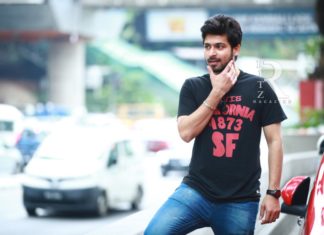The Real Artist – Riyas Komu
He is one of those artists whose oeuvre is deeply rooted in politics and realism. His paintings, to put it in his own words, carry a protest symbol one way or the other. He has remarked, “I strongly feel it is my duty to be political. I believe that my paintings should look back at the viewer rather than just tell a story or hang on the wall.” Along with his co-founder of the Kochi-Muziris Biennale, Bose Krishnamachari, Riyas Komu was ranked 86 in the 2015 Power 100 list of most influential people in the contemporary art world compiled by leading international art magazine, ArtReview.
Riyas Komu is a multi-media artist and an activist working towards reviving art education and developing art infrastructure in India. His critically acclaimed political works have been exhibited extensively in India and abroad, which include several key works that focus specially on the political and cultural history of Kerala. His works takes energy from social movements and political actions and are part of the larger narrative of the making and unmaking of artistic influences in society and also reflects the current issues in a global context, mainly violence, displacement and conflict.
In 2007 he was one of two artists from India to be selected by curator Robert Storr for the 52nd Venice Biennale and represented Iranian Pavilion at Venice Biennale in 2015. He participated in Jogja Biennale, Indonesia, 2011. Born in 1971, Riyas Komu graduated with Painting as his specialisation and has since extended himself to sculpture, photography and video installations. He is also a recipient of the KK Hebbar Foundation Scholarship and Bombay Art Society Award, 1996 and Maharashtra State Art Prize 1995.
Some of his Solo exhibitions are ‘On International Works’ Day, Gandhi From Kochi, Kashi Art Gallery 2015, Kochi; Subrato to Cesar 2010, Gallery Maskara, Mumbai; Related List 2008, Bodhi, Berlin, Germany, Safe To Light 2007, Azad Gallery, Tehran, Iran; Condition / Duroohatha 2012, Kashi Art Gallery, Kochi; and several other such. He co-curated the first ever International football film festival in India at Goa International Film Festival and Trivandrum International Film festivals in 2012. His works were recently showed at Tel Aviv Museum of Art, The Astrup Fearnley Museum of Modern Art (Oslo, Norway, 2009) ; The Shanghai Museum of Contemporary Art (Shanghai, China, 2009) ; and the Gwangju Emerging Asian Artists Exhibition (Gwangju, Korea, 2010).
Komu says that his work draws from the public domain. His subjects are charged with significance bringing about a disturbance depicting an element of political disquiet. For him, art is a medium for social comment on the situations the world is facing today.
He paints pictures based on photographic references from the print and television media. What is remarkable about his paintings are the multiple media he uses. The works in oil are thick and over-layered, and this gives them more dimension and life. The figures and the backdrop spring out and hit you and there is no escaping from what first appears stark and simple and seem to get more and more complex as it grows on you.
He has a passion for making documentary films. The one he worked on a couple of years back had an unusual theme –“The politics of nostalgia and food.” A video movie of eight minutes, it was shot on the streets and roadside restaurants of Mumbai. “The documentaries I make are an extension of my feelings and views, and they have similar themes, touching life’s many facets”, he says.
Riyas Komu’s work is an effort to archive the times. According to the artist, a creation that is balanced by the virtues of instinct, impulse, inner concern and sensibility achieved through a sense of objectivity would always appeal to the viewers since it invariably mirrors their issues and concerns.








 Raashii Khanna
Raashii Khanna










